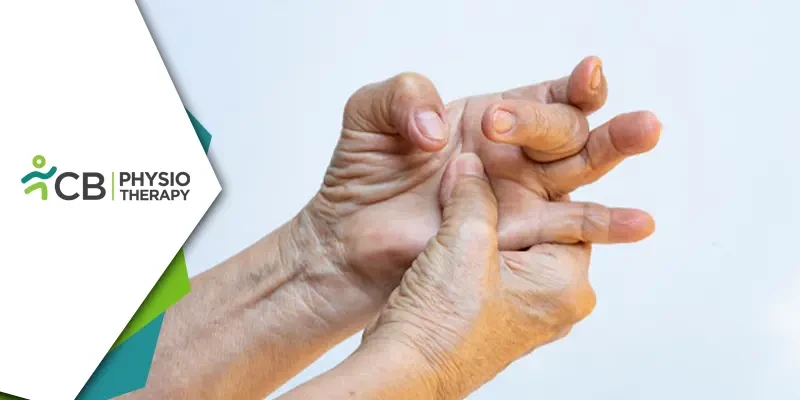In a world where our hands perform countless tasks each day, a condition that affects the smooth functioning of our fingers can be particularly debilitating. Trigger finger, a condition characterized by the painful and often jerky movement of the fingers can significantly impair one's quality of life. Fortunately, beyond surgical and medical interventions, Physiotherapy has emerged as a valuable non-invasive treatment option. Physiotherapy treatment includes electrotherapy and a variety of range of motion exercises. In this blog, we will delve into the nuances of the trigger finger, its causes, symptoms, and most importantly, the pivotal role that physiotherapy plays in its management.
Understanding Trigger Finger:
Trigger finger, medically known as Stenosing Tenosynovitis, is a condition that affects the tendons in the fingers and thumb. Tendons are the tough cords connecting muscles to bones, and they glide through tunnels called sheaths as they help in the movement of the fingers. When the tendons become inflamed or swollen, they may no longer glide smoothly, causing the finger to get stuck in a bent position before suddenly popping straight. This can be both painful and limit the range of motion in the affected finger.While trigger finger can occur without a clear cause, there are certain factors that can increase its likelihood like engaging in repetitive gripping or grasping activities, such as using tools or playing musical instruments, can strain the tendons and contribute to the trigger finger, conditions like rheumatoid arthritis, diabetes, and hypothyroidism have been associated with an increased risk of trigger finger, trigger finger is more common in individuals between the ages of 40 and 60, and women are more frequently affected than men. Symptoms of the trigger finger include "catching" or "locking" before suddenly releasing. Other symptoms include pain at the base of the finger or thumb, stiffness, and a palpable lump or nodule in the palm. In severe cases, the finger might become locked in a bent position, requiring manual assistance to straighten.
Physiotherapy: A Holistic Approach to Healing
Physiotherapy has gained recognition as a cornerstone in the management of Trigger Finger. It offers a holistic approach that addresses both the symptoms and underlying causes of the condition. Here's how physiotherapy plays a pivotal role:1: Pain Management: Physiotherapists employ various techniques such as manual therapy, ultrasound, TENS, and heat/cold therapy to alleviate pain and reduce inflammation in the affected area.
2: Range of Motion Exercises: Gentle stretching and range of motion exercises prescribed by a physiotherapist can help maintain or restore the flexibility and mobility of the affected finger.
3: Strengthening Exercises: Strengthening the muscles around the affected finger can improve its stability and support the tendons, reducing the likelihood of recurrence.
4: Ergonomic Education: Physiotherapists assess the individual's daily activities and provide guidance on ergonomic modifications to prevent strain on the tendons.
5: Manual Techniques: Techniques such as joint mobilizations and soft tissue manipulation are employed by physiotherapists to improve the gliding motion of tendons and restore normal movement patterns.
6: Home Exercise Programs: Physiotherapists design customized exercise programs that patients can perform at home to complement their in-clinic sessions, accelerating the healing process.
7: Education and Prevention: Beyond treatment, Physiotherapists educate patients about Trigger Fingers, its causes, and strategies to prevent its recurrence. This knowledge empowers individuals to make informed lifestyle choices.
Collaborative Care for Optimal Results:
The effectiveness of Physiotherapy in treating Trigger Finger is enhanced when it's part of a comprehensive care plan. Collaboration between physiotherapists, orthopedic specialists, and other healthcare providers is essential to ensure a well-rounded approach to diagnosis, treatment, and management.
In a world where our hands are vital tools for communication, creativity, and functionality, Trigger finger can be a significant hindrance. However, with advancements in physiotherapy and a better understanding of this condition, relief is within reach. Physiotherapy offers a holistic and non-invasive approach to managing trigger Finger, addressing pain, restoring movement, and improving the overall quality of life. If you or someone you know is struggling with Trigger Finger, consider reaching out to a qualified physiotherapist who can guide you on the path to recovery and hand wellness.

